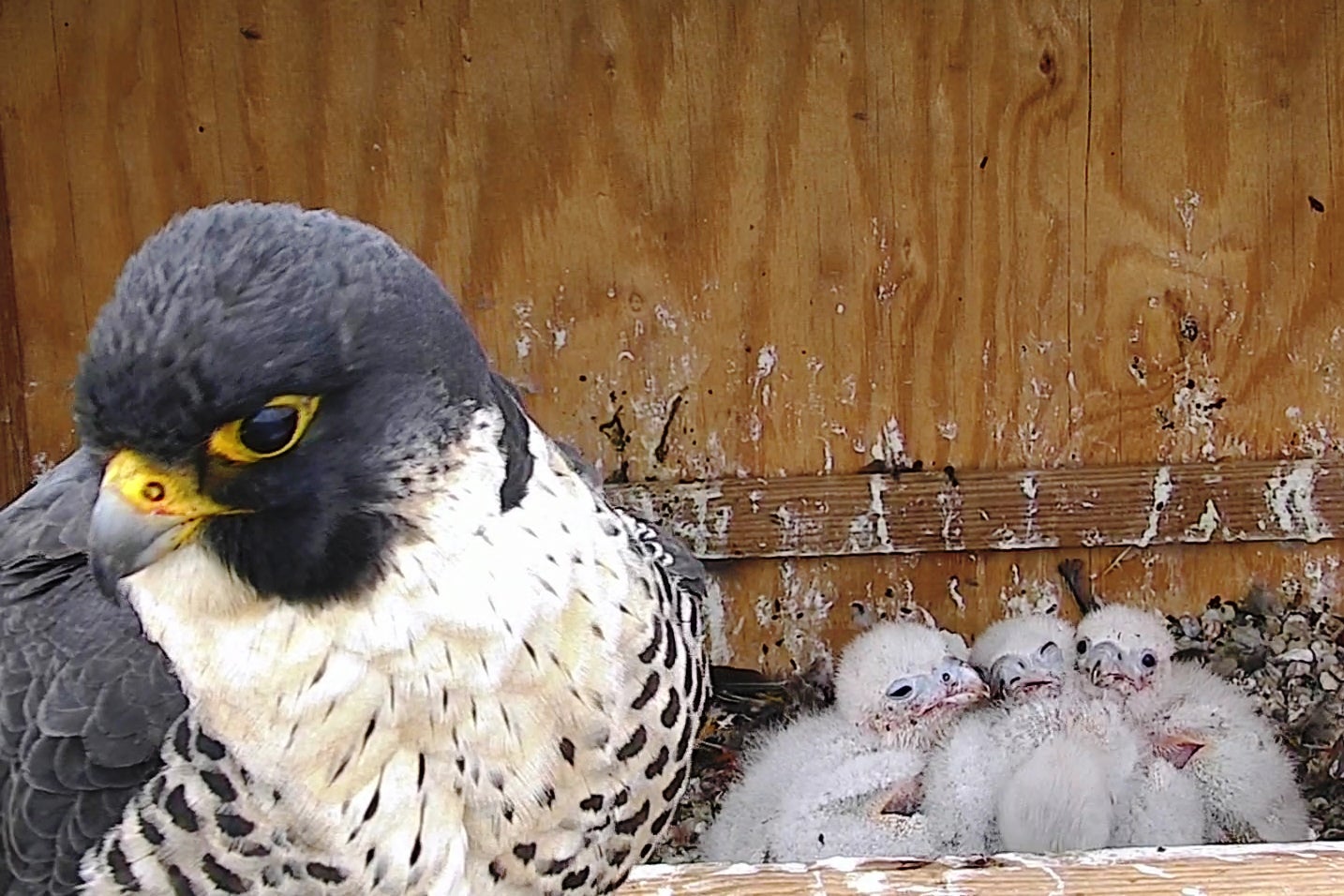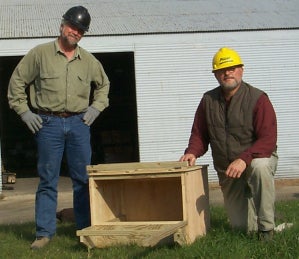Each spring, Dairyland's Bird Cam goes live when the Peregrine Falcons return to our nesting box in Alma. Click here to learn more.
History, facts and efforts
The remarkable success of the Peregrine Falcon Restoration Program is gratifying to everyone involved: staff at Dairyland Power Cooperative, the Raptor Resource Project and, of course, the birds themselves. Peregrine falcons were put on the Wisconsin Endangered and Threatened Species List in 1975 and, with our help, Peregrines are once again soaring high throughout the region.
In March 1993, Bob Anderson, director of the Raptor Resource Project, contacted Dairyland to see if the Cooperative would volunteer to help in recovery efforts for the Peregrine falcon. Anderson had researched falcon activity in western Wisconsin and knew, although they migrated through the area, falcons had not been successful establishing nesting sites at any of their typical dwellings on the cliffs overlooking the Upper Mississippi River. He believed the raptors would visit the stacks (which are several hundred feet high) at one of Dairyland’s power plants, located between high bluffs and the Mississippi River … the perfect spot for a falcon family. Anderson speculated the raptors might find a nest box high on one of the stacks an appealing place to call home. Dairyland management was enthusiastic and a raptor neighborhood was born.

Peregrines come home
In March 1994, the first falcon nest box was installed at a port 450 feet up the stack at Dairyland's Alma Generating Station. The box was constructed by Eden Prairie, Minn., high school students as a science project.
It took some time for the falcons to set up house, but on Earth Day 1997, a pair of Peregrine falcons were sighted in the nest box on the Alma Station stack. The two birds nesting in this box, named Alma and Nelson, produced three healthy offspring during 1997. The three chicks were brought carefully down from their home 450 feet up the stack to get U.S. Fish and Wildlife Service bands. This was a banner moment for the project, as it marked the first successful wild hatch of Peregrines in Western Wisconsin in 25 years!
Along with their new jewelry, blood samples were taken to assure that they were healthy. The chicks were named Clara, Florence and Harriet, after famous women from the Civil War. The young successfully flew from the nest in late summer 1997 and learned to hunt on their own near the plant site.
Nesting box installed at the second plant site
In 2001, the Alma Station nesting box was remodeled to allow for more perching space.
With the success of the Alma nest site, another nesting box was placed 375 feet up a stack at the Genoa, Wis., generating station. "G-3" as the plant was called (the plant ceased operation in 2021), was located approximately 100 miles south of Alma on the Mississippi River. A pair of falcons nested at G-3 in 1997, however, they did not produce any chicks.
In 1998, two falcons were hatched to Scooter and George at the Genoa nesting site. Since those initial offspring, more than 150 falcon chicks have hatched at Dairyland’s Genoa and Alma nesting sites.
Falcon facts
Peregrine falcons migrate to the Gulf of Mexico or South America for the winter and are expected to return to our region each spring.
Courtship behavior takes place in March with egg laying occurring in early April. Hatching of the clutch of eggs (usually 3 to 5) normally occurs in early May with the young falcons fledging in early July. Falcons prey mostly on pigeons, which are found in abundance near Dairyland’s generating stations.
Scientific Name: Falco peregrinus (meaning wanderer)
Status in Wisconsin: endangered
Length: female 18 to 21 inches; male 15 to 18 inches
Wingspan: female 45 inches; male 40 inches
Weight: female 32 to 40 ounces; male 20 to 25 ounces
Clutch Size: Usually 3 to 5 eggs
Incubation Period: 34 days
Age at fledging: 40 to 45 days
Identification: Crow-sized bird with pointed wings, blue-gray upperparts, black or blue-gray cap, black stripe below eye, white chin, buff breast barred with brown, bright yellow legs and feet; crossbow-like silhouette while in flight.
The Raptor Resource Project is a non-profit group based in Ridgeway, Iowa, working to restore the Midwest population of Peregrine falcons and other raptors by breeding birds for release in the wild.

